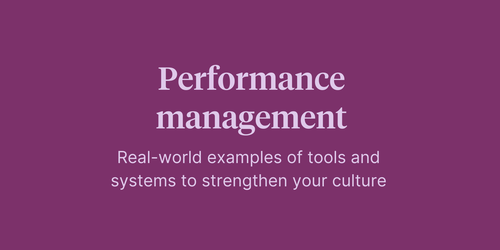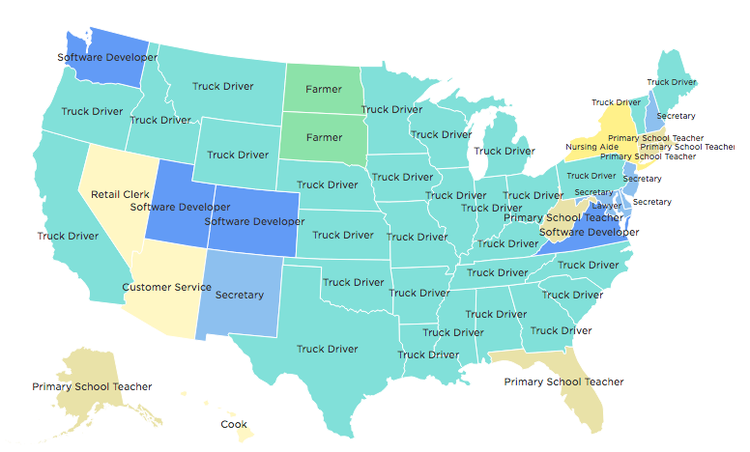
Article

Written by

Founder & CEO, Culture Amp
Early in the year is the time I reflect on what happened last year and think about what’s going to happen this year. What’s going to change? What are the new trends that I should be paying attention to?
Here’s my list of the four big tech trends that I’m watching closely this year.
In 2016 text analytics went from being the domain of scientists and blossomed into something much more accessible and mainstream. That's going to continue in 2017 and we are going to start to see some really interesting applications of that technology in this space.
As text analytics becomes smarter, faster and more powerful, we will continue to derive higher quality information from multiple sources. Our tools will become more adept at crunching numbers and finding patterns and correlations that will help us make smarter decisions.
People Geeks will be able to draw deeper and sharper insights around productivity, remuneration, demographics, staff retention, business & financial metrics and culture. We can explore the links between apparently unconnected data to draw meaningful conclusions for decision-making.
On the flipside, HR execs are going to have to become increasingly aware and robust in maintaining privacy as this increasingly large dataset continues to grow.
I’m going to say something controversial here: AI has become a clichéd buzzword attached to anything computerized and it has been overhyped and oversold. 2017 will start to see the sticky reality of AI.
In the first half of 2017, we are going to continue to see applications of AI in various aspects of HR. Toward the end of the year the conversation will have turned to what really is revolutionary and what is just overblown hype.
This is not to say that AI hasn’t made some astounding developments, and you wouldn’t have companies like Facebook and Google investing so much if there wasn’t some substance to it. But AI has its limits.
Machines can’t do everything alone. We are not going to solve problems by taking people out of the loop. The art and challenge is determining the optimal place to put the human in the loop. How do we use computers to augment and amplify what humans can do? That, for me, is the really interesting part of the AI puzzle that we’re going to spend more time confronting this year.
We live in a world where you can stand in an empty room and say:
“Alexa, how long will it take me to get to work?”
“Hey Siri, set my alarm for 6 o’clock”
“Ok Google, what’s on TV right now?”
Conversation as user interface (UI) has proven very popular and is being used in more situations. With Alexa especially, there’s a real personification of the interface – it’s deliberately positioned as an assistant in the room to whom you can give orders and who will carry them out for you.
One of the things we are going to have to struggle with is how we interact with UI and all the questions that opens up about what patterns we are reinforcing through communication, and when/if we should attempt to rewire those patterns. Given the growth of conversational UI, small differences in the way we use language now could have big societal implications in the long term.
Back in the days of The Jetsons, we were all really excited that robots were going to take over our jobs.
Now we are all really terrified that robots are going to take over our jobs.
Much has been written about the inevitability of self-driving cars. It is not a matter of if, but when. But there are also broader societal implications.
In the US, at the moment, the number one job is “driver”, whether taxis, Ubers, trucks, postal workers, transport or deliveries. When self-driving cars happen all those jobs will disappear very quickly. From a social point of view, a group of people, largely 40-50-year-old men will now no longer have any work.
The most common jobs in each US state (2014)

Source:
History has shown us that the number of jobs increases with technology. In the industrial revolution, the farmers moved into the factories. Jobs exist today that were inconceivable twenty years ago. But will this continue to be the case, or will we face a future with a large pool of displaced workers who don’t fit into the new world?
There is fierce debate about whether universal basic income makes sense. Norway is testing that right now and it will be fascinating to see the outcome.
What matters is society’s ability to adapt to change smoothly and equitably. As part of that, organizations need to step up and take responsibility for the impact of the work they are doing and the world they are bringing to bear.
Hopefully we’ll all have the opportunity to do work that fulfils both us and a societal need. But having a robot butler wouldn’t hurt either.
Didier Elzinga is a People Geek and CEO/Co-Founder of Culture Amp. You can follow Didier on